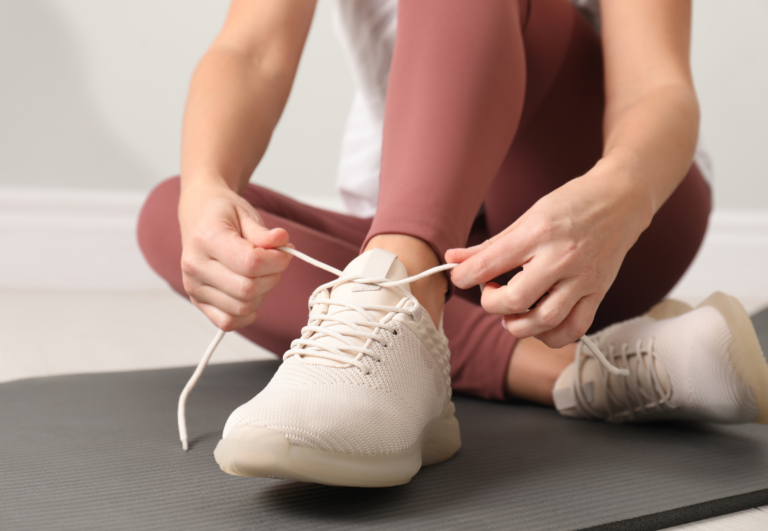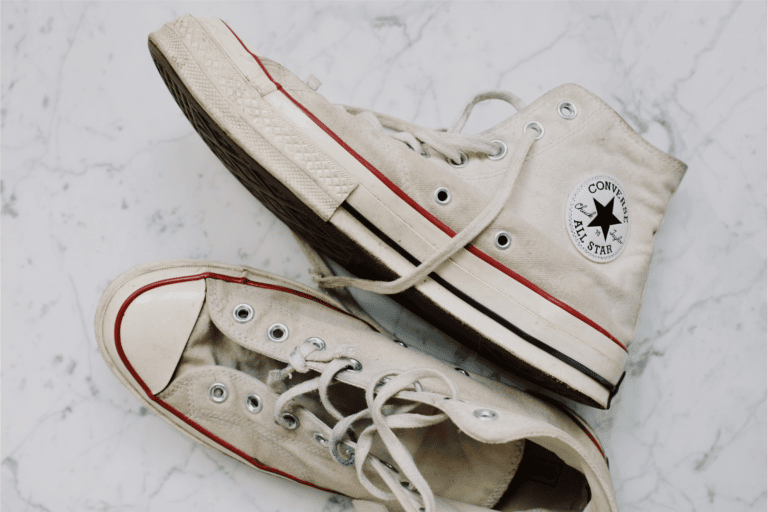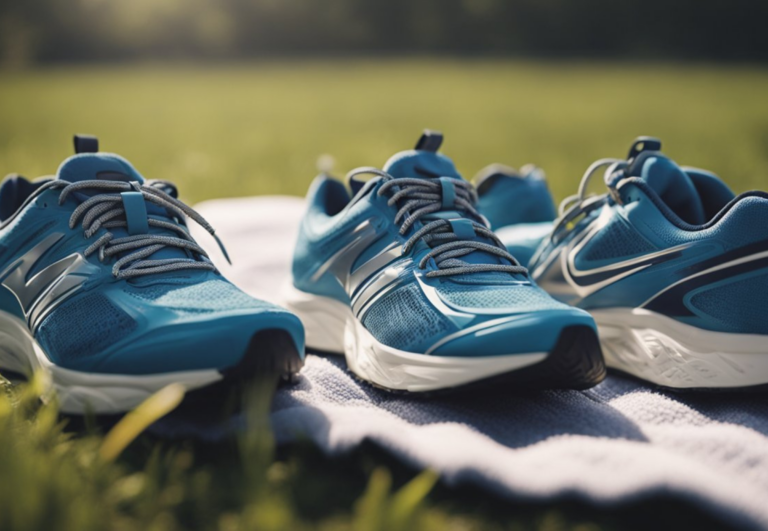What Should You Wear to Run in Freezing Weather?
Running in frigid conditions is exhilarating and invigorating, and provides a release from the dead-of-winter indoor claustrophobia. But what starts as an exhilarating run can quickly turn into a polar peril if you are not geared up for the brutal cold.
In freezing weather, runners should wear three basic layers. The base layer should wick moisture away from the skin, the middle should be thick in order to retain body heat, and the shell or outer layer should provide protection against the wind, snow, and rain. Minimize exposed skin by covering your head and face. Keep your feet warm and dry.
Read on to learn the objectives for each layer and the best types of clothing to optimize for those purposes. Add to that appropriate winter headwear and footwear, and you will be well prepared to enjoy running in frigid weather.
Is it okay to run in freezing weather?
Running in cool weather can be stimulating and much less stressful on the body than the heat of summer, but what about running in freezing weather? How cold is too cold?
Running in freezing weather is a great exercise and experience as long as you’re dressed for it and keep certain safety precautions in mind.
As long as it’s not cold enough for frostbite and hypothermia to be major risks, running in the freezing cold doesn’t inherently pose any health hazards. Of course, you should be sure to watch for environmental risks such as hidden drop-offs in the snow or black ice.
When preparing for a freezing run, one of the most important things you can do is dress appropriately. Runners will need at least three body layers – a base layer to wick moisture, a mid-layer to keep you warm, and an outer layer to protect you from the elements – plus insulating socks, winterized shoes, gloves or mittens, and knit cap. You may also want a neck gaiter or balaclava to cover your neck and face if the weather is especially cold.
Freezing temperatures should be respected, but not feared. It only takes a bit of preparation and the right gear.
What temperature is too cold for a run?
For the most part, frigid weather should not prevent you from going out for a run. Many runners live in cold climates and routinely run in temperatures in the single digits Fahrenheit or lower. This requires you to dress appropriately, especially if you’re not accustomed to the extreme cold.
In general, you should avoid running in temperatures significantly below 0°F – already below “freezing.”
The American College of Sports Medicine cites the wind-chill temperature of -18°F (-27°C) as the line not to cross for outside runs of 30 minutes or longer. In these conditions, frostbite and hypothermia are the greatest risks.
Is it okay if it hurts to breathe in the cold air?
Our lungs are amazingly adaptable and built to function well in temperature extremes.
According to Dr. Darrell Menard, Surgeon General’s specialist advisor in sports medicine, research has shown people can train in temperatures in excess of -58°F (-50°C) without damage to their lungs. This does not mean we are all equally equipped for super-cold temperatures.
If you have asthma, COPD, or other pulmonary ailments, you may find it too uncomfortable to run in frigid weather, so the treadmill or an indoor track will have to suffice on those very cold days.
Even if you don’t have a known lung condition, you may find that running in extreme cold causes a burning sensation in your airways, shortness of breath, chest tightness and/or cough, a condition called bronchospasm. If so, avoid running outdoors in temperatures that cause these symptoms.
Should you wear a running mask?
Even if you’ve never gone running in the extreme cold, you’re almost certainly aware of how the wind and cold can wreak havoc on the skin of your face and lips.
A ski mask, balaclava, neck gaiter, or a scarf over your nose and mouth can help prevent heat loss on a freezing run.
The potential downside is that any cloth that is covering your nose and mouth can become less porous and more difficult to breathe through as moisture droplets freeze into the fabric. That’s why some runners will wear a nose and mouth covering to help for the first 5 to 10 minutes when you feel the coldest, and then remove it once they have warmed up.
Does cold weather affect my running performance?
Any runner who has run a race in sub-zero temperatures knows the struggle to keep a race pace. And that is not simply due to bulkier clothes, or bad traction on icy roads.
Cold weather running performance can be affected by:
- Restricted blood flow to your muscles, causing tightness and less strength
- Reduced cardiovascular efficiency
- Rapid fuel (glycogen) depletion as your body tries to maintain your core temperature
Potential benefits to running in freezing weather
Now that we’ve discussed some of the potential concerns when running in freezing weather, are there any compelling reasons to put yourself through it?
Potential benefits of running in freezing weather are:
- Freedom to run slow – Running in wintery weather can be liberating by freeing you from the pressure to maintain a target pace. Winter runs should be as slow as the conditions dictate, so you can leave your ‘speed anxiety’ at home.
- Freedom to run slow – Running in wintery weather can be liberating by freeing you from the pressure to maintain a target pace. Winter runs should be as slow as the conditions dictate, so you can leave your ‘speed anxiety’ at home.
- Reduced Seasonal Affective Disorder – SAD affects roughly 6% of Americans during the winter months. Symptoms include a lack of energy, weight gain, less interest in social interaction, and depression. Running releases endorphins and endocannabinoids which can reduce stress and provide a mood lift.
- Adaptation to the cold – Your body’s reaction to the first few cold winter days is reasonable if a bit panicky. You switch to survival mode. To keep your core temperature from dropping, your circulatory system redirects blood away from your extremities, causing cold hands and feet, and shivering. The good news is with each subsequent exposure, your body becomes accustomed to the cold, and through a process called cold habituation, the survival responses are mitigated, less blood is diverted from your extremities, and you feel less discomfort.
- Running in the Winter ‘Run-derland’ – Add winter runs to your routine for the simple joy of being outside for the first snowfall, taking in the beauty of a snow-covered landscape, and experiencing the silencing effect of a fresh layer of snow. You may find that winter runs provide benefits for your body and your soul.
8 quick tips for dressing for a run in freezing weather
Now that we know running in the freezing weather can have some fun benefits, it’s time to take a look at the ins and outs of dressing for it.
When getting dressed for your freezing-weather run, you should keep these tips in mind:
- Wear snug – but not tight – clothing. Excessively tight clothing restricts blood flow to your muscles, causing tightness and reducing strength.
- Include a sweat-wicking base. Even on the coldest days, you’re likely to begin to sweat once you are past the first mile or so. A base layer with wicking properties will move that moisture away from your skin to keep you feeling dry and warm.
- Breathable layers are non-negotiable. Choose middle layers and shells that are breathable, that is, that will allow for the moisture you generate to escape.
- Avoid cotton clothing. Winter hates cotton. It retains moisture and loses its insulation value too easily to be a good choice in winter.
- Keep the wind and snow out. A lightweight, breathable waterproof shell is essential on those blustery winter days.
- Keep your hands and feet warm. You will feel the cold first in your hands and feet, so good gloves (mittens are even better) and wool socks will be your best friends.
- Get your head in the game. Wear a cap pulled down over your ears, and if your shell or a mid-layer has one, a hood over it. Add a scarf or balaclava for those bitter cold days.
- Shed a layer before you get too hot. One of the great benefits of layers is that they allow you to adjust as you run. If you start to sweat, you can open or remove your shell or a mid-layer shirt, pull back your hood, untuck a mid-layer shirt, etc.
Layering System
The ultimate goal of layering is to retain as much of the heat your body generates as possible while not trapping moisture. Layering is the use of multiple garments of different materials and construction serving different purposes toward that goal.
The three basic layers are:
- Base – In direct contact with your skin, wicks away moisture, keeps skin drier
- Middle or mid-layer – Thicker, loftier material to retain heat
- Shell or outer layer – Protects against wind, rain, snow
Let’s look at how these layers function, what they are made of, and how they work together for a heat-retaining system.
Base Layer
Base layers should gently hug you; it is not compression layer (those serve a completely different function). You do not want your breathing or movement restricted by a too-tight base layer.
Typical base layer fabrics are polyester, nylon, acrylic, and Merino wool. These are preferred for their essential moisture-wicking properties, moving moisture away from your skin and allowing it to evaporate. An additional benefit is to prevent abrasion from looser fitting layers.
Base layer shirts range from sleeveless to short sleeves to long sleeves, and crew neck to turtleneck and leggings are available in ¾ or full length. Good examples are Smartwool Merino 150 Base Layer shirt and Classic Thermal Merino Bottoms. It’s good to have a few choices in your closet so you can go for more coverage as the temperatures drop.
Middle Layer
While the base layer keeps the sweat from clinging to your body and chilling you, it doesn’t actually keep you warm.
The mid-layer does most of the insulation work, primarily by capturing air and reducing heat loss. The most common mid-layer materials are woven in a way to create greater loft, meaning more trapped air.
Fleece, typically made of polyester, is probably the most common mid-layer material, but the array of other fabrics can be confusing. There are many proprietary fabrics used by different clothing brands with names like Addidas PrimeKnit and Nike Therma-FIT.
A good mid-priced mid-layer is Columbia Men’s Steens Mountain Fleece.
Wool also makes a good mid-layer material but look for a loftier weave than is used in wool base layers. In extremely cold weather, the best insulation is down, which also has great breathability so less moisture is trapped inside. Natural down is a better insulator than synthetic, but it is also more expensive. The insulating properties of down are measured as fill-power, basically how many cubic inches of space 1 ounce of down will fill. These range from 450 to 900, with the higher numbers indicating higher loft and better insulation properties. The Patagonia Down Sweater provides great warmth with 800 fill-power down.
Consider looking into mid-layer garments with a DWR (Durable Water Repellent) treatment, such as the Patagonia Down Sweater. That provides more versatility, allowing you to skip the outer shell when the weather is not quite so blistering cold.
Shell Layer
Protection from wind and precipitation is essential to enable the mid-layer to maintain its insulation value.
An outer layer can be very lightweight yet quite effective. These are usually made of polyester or nylon, or a combination of both. The ones made for running tend to be very light, weighing from 4 to 9 ounces. Look for a Gore-Tex or other DWR (Durable Water Repellent) treated fabric to get protection from the elements with breathability, so moisture is not trapped inside.
When selecting a shell, remember that it will need to fit over the base and mid-layers. The Outdoor Research Helium Jacket is a lightweight but rugged outer layer providing excellent protection from the elements. Make sure your shell is breathable as well so the moisture you generate has a way out. Especially effective for this are vents under the arms, where outside moisture is unlikely to enter.
Additional Protection
Beyond layering to protect your core, arms, and legs, you will need to select the right protection for your head, face, hands, and feet.
Exposed skin allows for heat loss and the potential for frostbite, so get the right gear to keep covered and insulated.
Head
Knit caps have been the preferred headwear for hundreds of years and with good reason.
Knit caps are simple, inexpensive, durable, and very effective if made with the right materials. Look for a cap with 50% or more wool, and a generous cuff to double the insulation over your ears.
A good example of this is the Carhartt Wool Blend Cuffed Beanie. It’s thick, durable, and warm with 80% wool, and 20% Nylon. Additionally, by wearing a mid-layer or shell that includes a hood, you can increase the effectiveness of your headwear.
Face (and Neck)
Face and neck coverings may be among the last items considered, but they can make a huge difference in your comfort in extreme cold.
The Rothco Polar Fleece is a good choice for a neck gaiter that can also cover your mouth and nose. A balaclava is an excellent choice for one garment that provides full face, neck, and head protection. The Nike Pro Hyperwarm Hydropull Hood Balaclava is made with their Therma-FIT material for cold-weather athletes.
Hands
Mittens are superior to gloves in the primary task of keeping your hands warm, but you do give up the dexterity you may need to work a phone, pull up a zipper, or retie a shoe. If you prefer to wear gloves, be sure to get the right fit. Too tight and you will not be able to move your fingers freely, and that leads to colder hands.
Look for a pair with a good weatherproof outer and good insulation. Outdoor Research Backstop Sensor Gloves provide excellent insulation, and they work well with touch screens.
If you prefer the warmth of mittens, Hestra Moon Mitts are exceptionally well-insulated for the coldest runs.
If you’d like the best of both mittens and gloves, TrailHeads Touchscreen Gloves are gloves with mitten shells for added protection from the elements. These provide the added versatility of allowing you to remove the mitten covers as you warm up to keep your hands from sweating.
Feet
Do not neglect your feet when putting your winter gear together.
Start with a good pair of insulating socks and make sure your shoes are appropriate for winter and/or snowy weather.
Wool socks like the Darn Tough ATC Micro Crew are warm and durable. Add a sock liner if you want additional wicking and insulation.
Finally, a good winter shoe with aggressive lugs like the Hoka Challenger ATR GTX.
For more information about winterizing this running shoe, check out this article.






